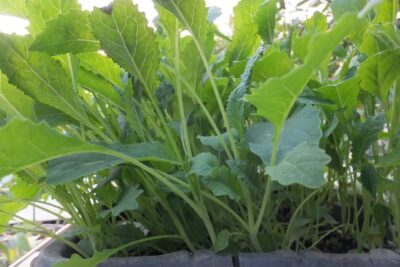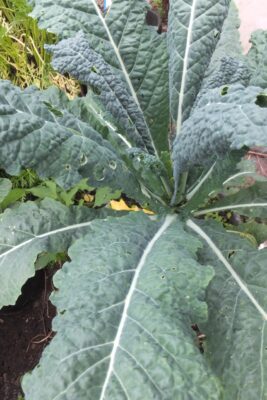
An unlikely plant to encounter in a greenhouse has been Kale. Completely hardy, Kale’s effectively a cabbage but tougher, eventually a large plant several feet tall. Seldom eaten save as a deep-winter vegetable the leaves have seen increasing demand year round by health seekers for super-nutritious smoothies.
It’s quite feasible to grow Kale plants to full size in a greenhouse border picking as they grow -if it’s light, well ventilated and not hot, just as noted they take space. The plants can be kept more compact by growing in bucket size tubs, however this naturally means less crop.
The obvious advantage of growing or moving Kale under cover is to extend the growing period, and reduce common problems such as cabbage white caterpillars, even Brassica whitefly (which is different to usual greenhouse whitefly) though to be safe you need fit mesh to door and ventilation.

However there’s a better way. In recent years more folk have been growing more ‘saladings’ / micro-greens, edible crops of leaves and shoots from young plants. Sowing successive batches of densely sown trays, grown rapidly, picked or cut over a few times then discarded. By growing Kale like this in a greenhouse fresh leaves can be ensured 52 weeks of the year or to cover when the outdoor crop is not readily available (Kale goes to flower in spring so few pickings until new plants large enough in Summer).
So sow batches, say a fortnight apart, anytime with warmth and extra light. You can use any variety for this. Sow generously, say one to every square cm, on a rich moist lime containing compost in a seed tray, then cover with another cm thick layer and firm down flat with a block. Water carefully and keep in a light cool place. As the seedlings grow you can start to pick leaves, taking alternate whole plants as they get larger. Then simply scissor off a section at a time. The plants will keep producing for months if kept fed and watered though are better superseded by fresher more vigorous batches.


